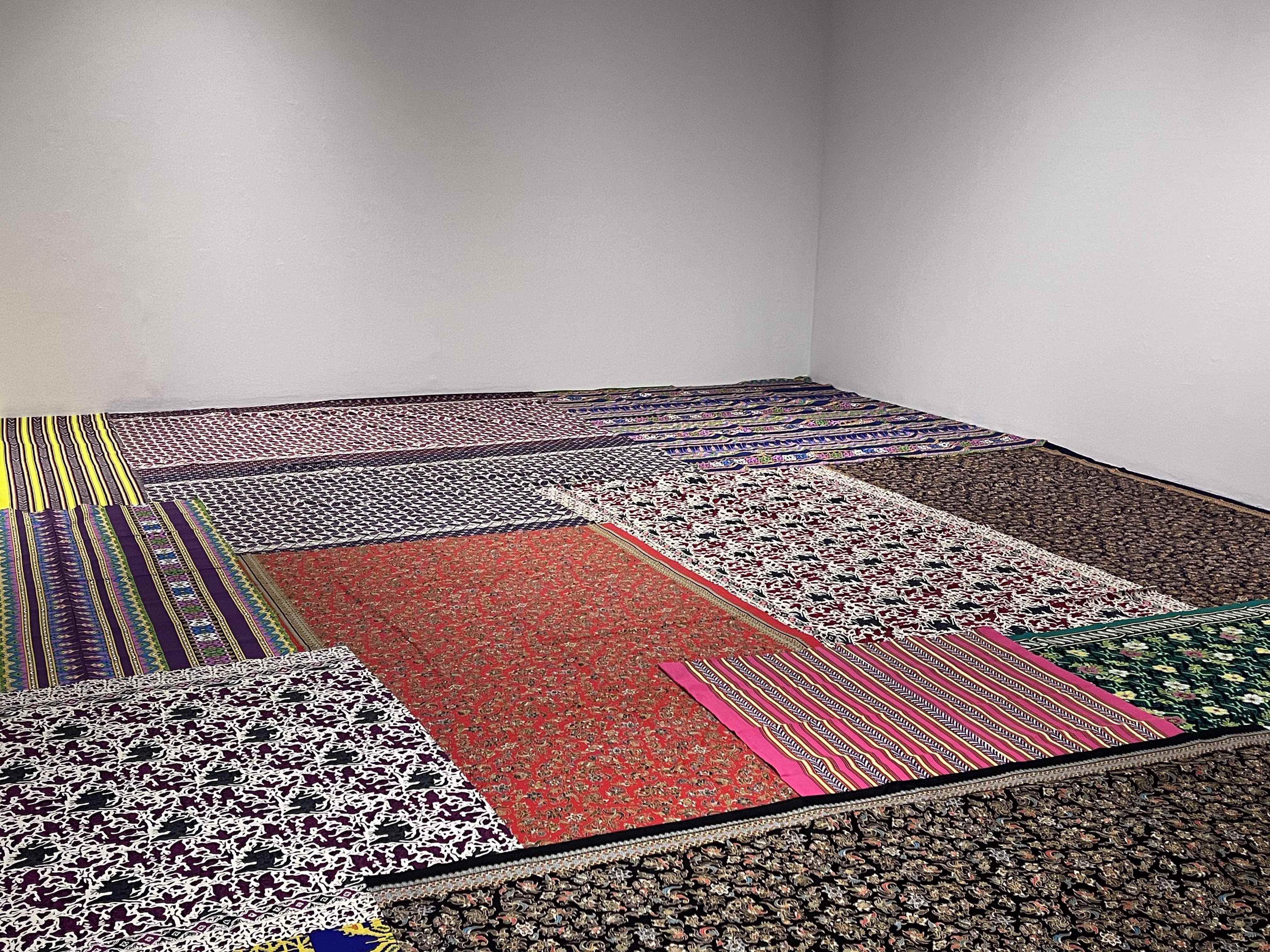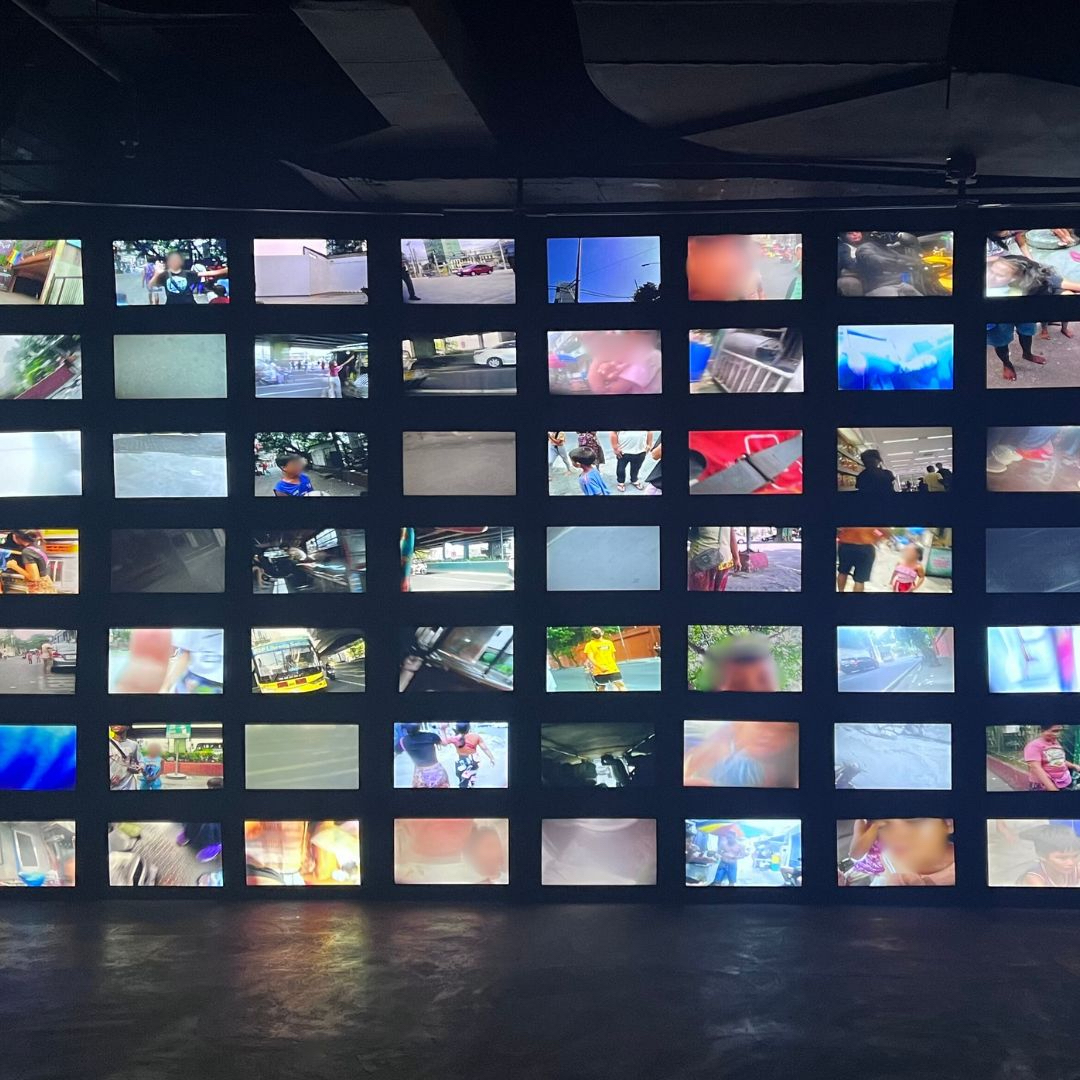At least within my circle, Vien Valencia’s BAD LAND has spurred polarizing questions on gaze, power, and ethics. I say this, however, for not entirely the easiest of reasons. The questions are as urgent as today’s milieu of creative and cultural production may raise—and addressing them necessitates utmost sensitivity towards subject, artist, and community.
First, a quick run-through of the project before I expound. Valencia described BAD LAND as an ongoing moving image “collaboration” with a Badjao community in Manila, where children of the community were given video cameras and “invited” to film daily scenes of their urban environment.
The artist began BAD LAND as early as 2023, but its first exhibitionary iteration was mounted only recently in his current solo exhibit at Underground Gallery in Makati. The centerpiece of this show are 84 of the video clips shot by Badjao children—shaky and disjointed footage arranged in 7 rows and 12 columns, playing simultaneously in visual and sonic unrest across an entire wall of the gallery.
My initial impression with the project, seeing the videos face-to-face as the only light source inside a blacked-out room, is that it feels a little too invasive. Perhaps this is partly due to the manner of presentation: occupying the entire stretch of a wall is reminiscent of a cinematic display, not to mention that it is presented in a site designed for consumption, so at one point I wondered if this is not making a spectacle out of the children’s intimate realities.
But maybe intimate is a bit weak to describe what the videos show. The children’s self-shot footage show them chase and climb onto moving jeepneys to seek alms and carry younger siblings as they hand out containers and envelopes again to seek alms. At times they smile, laugh, or dance in front of the camera, or mischievously point to their adult companions sprawled on the sidewalk picking lice out of each other’s hair. There is thus a lingering feeling of spectatorship, like the unease at witnessing something which you think you have no right to see.
Which beats the intended point of the project. In the exhibit’s text, the artist poses the question: “What if the powerless became the watchers, wielding the gaze of scrutiny over those who once held authority?” From here, I understood the initiative as an attempt to reclaim lenses and narratives. Often, the children are the object of gaze—of documentary producers, media sensationalists, and other opportunists who take advantage of their culture and plight for personal gain. With the children now the ‘subject,’ as in the doer or the ones holding the lens and directing its vantage, the project attempts to subvert just that.
But at the same time, holding the camera does not automatically imply control of the narrative. Participatory photography methods, such as BAD LAND’s, do not erase the preexisting terrain of power differentials in which the researcher/artist and the participants are enmeshed. I find similarities between BAD LAND and a participatory photography project in El Salvador by American educator Esther Prins. What emerged from the initiative is far from simple empowerment of the participants, with them wielding control of the camera and, consequently, the gaze. Rather, the author observed how the gaze became “multidirectional”—as the participants held the camera, the gaze over them by their neighbors remained.
In another participatory project, this time with primary school children in the Netherlands, the authors reflected how the method can counterproductively end up disempowering its participants. This is especially true when it is outsiders, such as the researcher, who establish control over the project’s details (objective, method, framework, etc.). Rather than becoming the ‘subjects,’ the participants remain as the ‘objects’ of an agenda that they did not set. Just as participatory processes do not erase power differentials, giving cameras to participants does not preclude concerns on surveillance, invasion of privacy, or unfair collaboration practices, especially with groups who are already vulnerable as it is.
As the project unfolds in its succeeding iterations, more contextualization and transparency from the artist are imperative in dispelling the ethical skepticism it may leave in its wake. How much control do the participants have across the various stages of the project—from conceptualization, production, to presentation (i.e., to what extent is it a collaboration)? How does the artist intend to mitigate potential risks to the participants’ safety? How will the project impact the participants beyond exposure to the art ecosystem from which they have been historically excluded? More proactive efforts in addressing these are necessary to ensure that the project’s execution will not end up at variance with its intent.
BAD LAND runs until May 15, 2024 at Underground Gallery.
Chesca Santiago is an anthropology student and art writer based in Quezon City.


